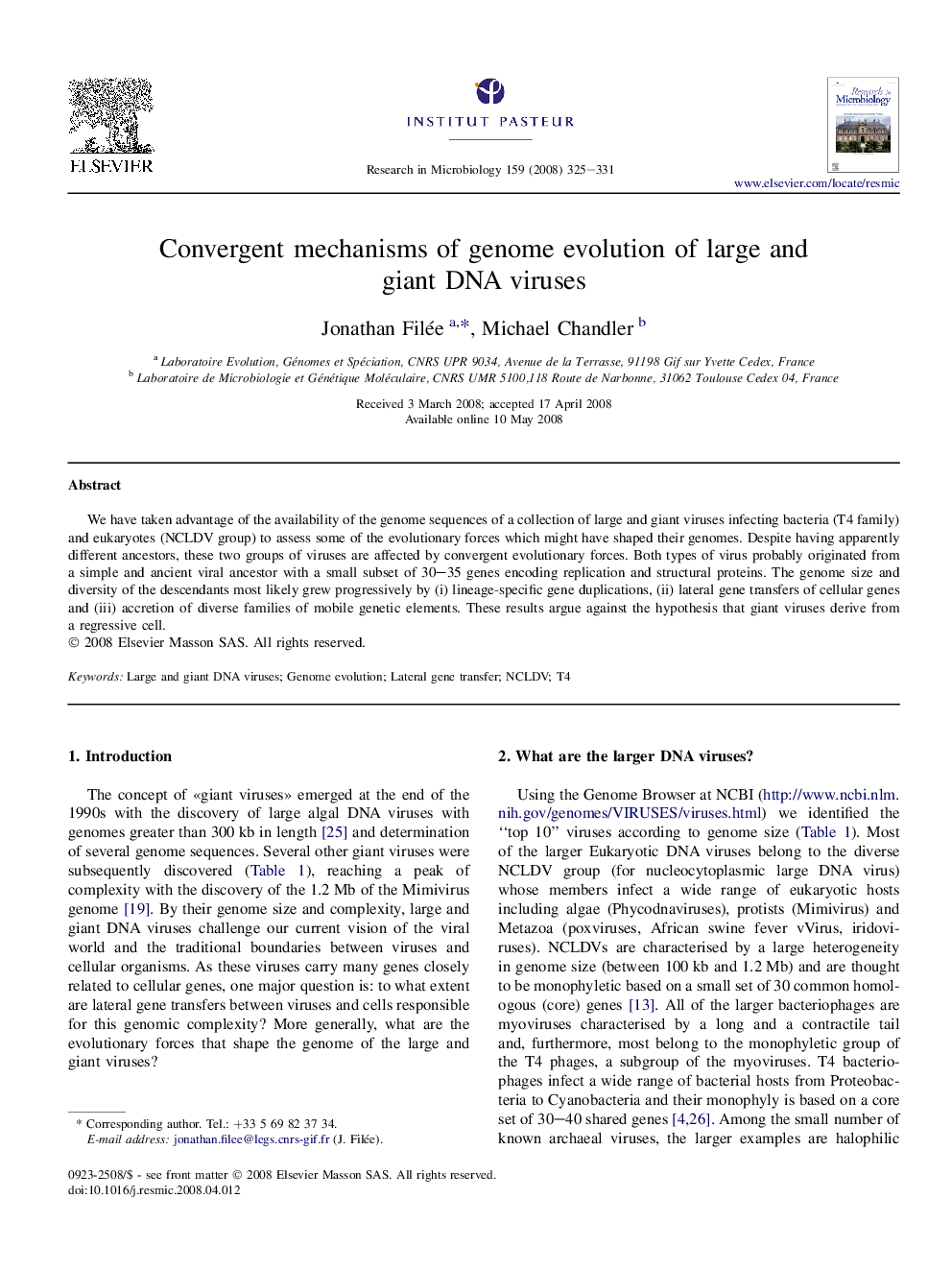| Article ID | Journal | Published Year | Pages | File Type |
|---|---|---|---|---|
| 4359104 | Research in Microbiology | 2008 | 7 Pages |
Abstract
We have taken advantage of the availability of the genome sequences of a collection of large and giant viruses infecting bacteria (T4 family) and eukaryotes (NCLDV group) to assess some of the evolutionary forces which might have shaped their genomes. Despite having apparently different ancestors, these two groups of viruses are affected by convergent evolutionary forces. Both types of virus probably originated from a simple and ancient viral ancestor with a small subset of 30-35 genes encoding replication and structural proteins. The genome size and diversity of the descendants most likely grew progressively by (i) lineage-specific gene duplications, (ii) lateral gene transfers of cellular genes and (iii) accretion of diverse families of mobile genetic elements. These results argue against the hypothesis that giant viruses derive from a regressive cell.
Related Topics
Life Sciences
Immunology and Microbiology
Applied Microbiology and Biotechnology
Authors
Jonathan Filée, Michael Chandler,
